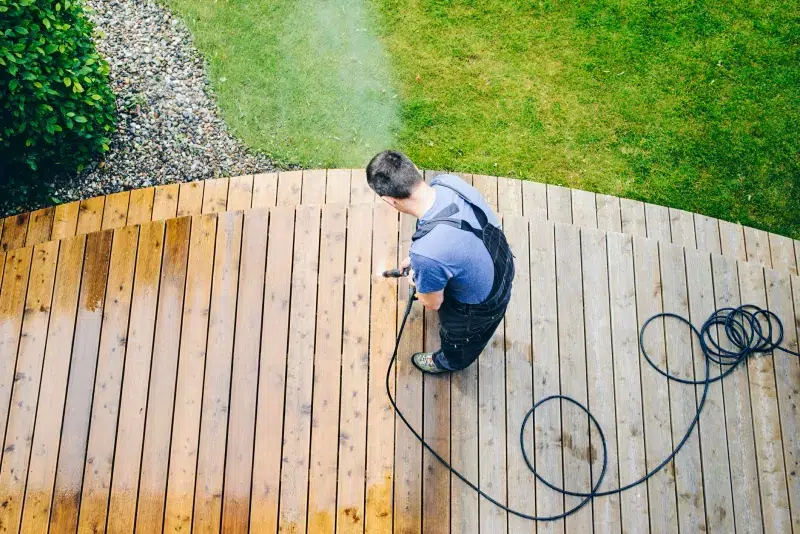Maintaining the outside of your house is critical not just for decreased appeal but also for preserving its value and structural integrity. DIY outside cleansing can be a rewarding venture, saving you money and supplying you with a sense of feat. However, it is crucial to understand what to do and what to avoid to make sure you’re now not causing harm or risking your protection. In this comprehensive manual, we’re going to walk you through the dos and don’ts of DIY outside cleansing.
Dos:
- Inspect First: Before you start cleansing, walk around your house to look for damage or areas that need attention. Look for cracks, free siding, or any symptoms of mold or mildew.
- Safety First: Always prioritize protection while assigning any outdoor cleaning undertaking. Put on the proper safety equipment, such as goggles, gloves, and non-slip shoes. If you are running at heights, use a robust ladder and have someone else assist if needed.
- Choose the Right Tools: Invest in satisfactory cleaning gear and devices desirable for the challenge at hand. This might also encompass a stress washing machine, gentle-bristled brushes, extension poles, and environmentally pleasant cleaning solutions.
- Start with Gentle Methods: To avoid damaging surfaces, begin with the gentlest cleansing method possible. For example, start with a lawn hose or a smooth brush earlier than resorting to a pressure washing machine.
- Use Eco-Friendly Products: To minimize harm to your surroundings, opt for environmentally friendly cleansing solutions. Vinegar, baking soda, and moderate dish soap are powerful alternatives to harsh chemicals.
- Work from the Top Down: When cleaning siding, home windows, or gutters, start from the top and paint your manner down. This prevents dirty water from streaking smooth regions and makes the cleansing method more efficient.
- Rinse Thoroughly: After making use of cleaning solutions, continually rinse surfaces very well with clean water to do away with any residue. This helps save you streaking and guarantees a clean end.
- Protect Landscaping: Use plastic sheeting or tarps to cover sensitive plant life and landscaping features earlier than cleaning with chemicals or strain washers. This prevents damage from overspray or runoff.
- Regular Maintenance: Make outside cleaning an everyday part of your property preservation routine. By cleaning surfaces frequently, you will prevent the accumulation of dust, mold, and mildew, prolonging the existence of your property’s outside.
- Seek Professional Help When Needed: If you are unsure how to address a particular cleansing task or if it entails running at heights or managing unsafe substances, do not hesitate to seek assistance from an expert. For comprehensive exterior cleaning services, trust an experienced team to revitalize your home’s outer appearance.
Don’ts:
- Use Excessive Pressure: Avoid using excessive pressure when cleansing surfaces, especially delicate substances like wooden or vinyl siding. High-strain washing can harm by stripping paint, denting surfaces, or forcing water into cracks and inflicting leaks.
- Neglect Safety Precautions: Never compromise on safety when undertaking outside cleansing obligations. Avoid running on moist or slippery surfaces, and never lean a ladder towards volatile or fragile surfaces.
- Overlook Proper Ventilation: Ensure good enough ventilation whilst the usage of cleaning chemical substances or running a strain washer. Avoid running in restrained areas or areas with negative airflow to save you publicity from dangerous fumes.
- Ignore Manufacturer Guidelines: Always follow the manufacturer’s suggestions for cleaning and preservation when dealing with precise substances such as siding, roofing, or decking. Using the wrong cleansing retailers or techniques can void warranties and cause damage.
- Mix Cleaning Chemicals: Avoid mixing cleaning chemical substances except mainly directed to accomplish that by using the producer. Mixing sure chemical compounds can produce toxic fumes or dangerous reactions.
- Forget about Water Conservation: Be aware of water utilization when using a strain washer or hose for cleaning. Consider using a water-saving nozzle attachment and avoiding excessive runoff to preserve water.
- Skip Surface Preparation: Properly prepare surfaces before cleansing to ensure satisfactory results. This may additionally include removing particles, using pre-treatment solutions for mildew or mold, or repairing broken areas.
- Clean in Direct Sunlight: Avoid cleaning surfaces in direct sunlight, especially with cleansing solutions or strain washing. High temperatures can cause cleansing solutions to evaporate too quickly, leading to streaking or uneven cleaning.
- Use Abrasive Materials: Avoid using abrasive substances such as metallic wool or abrasive pads on surfaces like aluminum siding or painted timber. These materials can scratch or damage the floor end.
- Underestimate the Importance of Maintenance: Regular preservation is key to retaining the appearance and structural integrity of your own home’s exterior. Ignoring cleaning tasks or permitting dirt and dust to build up can cause expensive repairs down the road.
All in All
In conclusion, DIY outdoor cleaning can be a satisfying and powerful way to maintain your house’s exterior. By following those dos and don’ts, you could gain professional-looking effects at the same time as fending off common pitfalls and hazards. Remember to prioritize protection, select the right equipment and cleaning answers, and make exterior cleaning a normal part of your property renovation. With the right care and interest, your own home will stay smooth, attractive, and properly blanketed for years yet to come.
